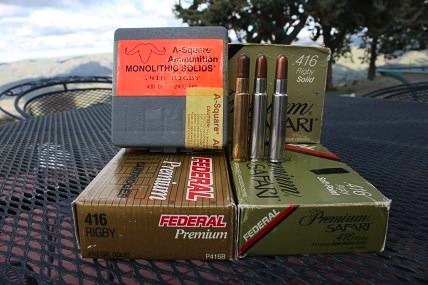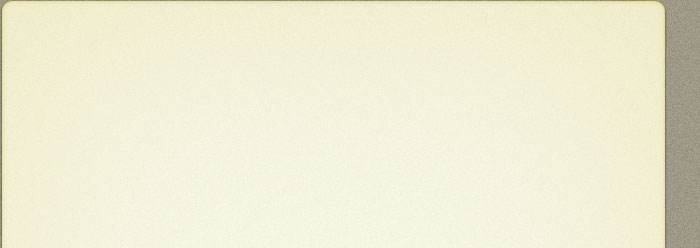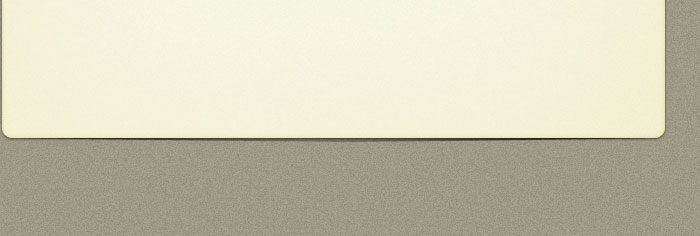.416 Rigby

For most of its lifetime, the only way to get a rifle chambered for the .416 Rigby was to go to John Rigby & Co.’s London premises to have one made or have a gunsmith build one on either a magnum length Mauser or 1917 Enfield action. The ideal route was to have Rigby’s build one on an Original Magnum Mauser action made in Oberndorf am Neckar, Germany. Only 169 were made by Rigby’s prior to World War Two and they commanded high prices during their day. A popular post-war alternative was to use a Brevex magnum length action, assuming one could be found. Jack O’Connor had a .416 Rigby rifle made on a 1917 Enfield action and although they could look ungainly, rifles built on these actions were generally well liked by their owners. Surprisingly enough, it is possible to build a .416 Rigby on a standard length Mauser action. A perfect example would be the rifle owned by the legendary Harry Selby, Robert Ruark’s favorite professional hunter. He used a .416 Rigby built on a standard length Mauser action during his many years of guiding safaris in east Africa and never had it cause him the slightest bit of trouble. However, the gun was made by John Rigby & Co. and undoubtedly was built to the highest standards. Considering the modifications that would have to be made to the action to make it work, I would prefer to have a gun made on a magnum length action.
The .416 Rigby is a rimless cartridge that is also one of the most capacious ever made. It is also a bit unusual in that it has a 45 degree shoulder angle, making it an expensive cartridge to manufacture. I suppose if you can afford to buy one of the rifles made by John Rigby & Co., the cost of ammunition is a relatively small consideration but it is something that shooters need to take into account. In fact, the ammunition sold by Rigby’s during the early years of production was what cemented the reputation of the cartridge as an utterly reliable killer of African game. It was loaded to fairly low pressures to allow for easy extraction in hot climates and the rimless design made for extremely smooth feeding from the box magazine of Mauser-actioned rifles. There were two bullets offered, one a 410 grain soft point that as John Taylor wrote in African Rifles and Cartridges, “would crumple a charging lion as few other weapons are capable of doing” and the other, a 410 grain steel-jacketed solid that would punch straight through the largest game without deviating from its course. Of the steel-jacketed solids, Taylor had nothing but praise for them and noted that “These bullets have three or four times the thickness of solid metal at the nose that you find with the ordinary full-patch slug”, which pretty much guaranteed any hunter using it would have a bullet that would never fail. Although the .416 Rigby competed with the .404 Jeffery and .425 Westley Richards, both good cartridges, it eclipsed them both by virtue of its superior bullets. Rifles made prior to World War Two by John Rigby & Co. are highly prized by collectors and hunters alike. In more recent times, they have been built on Brno actions and when available, on Original Magnum Mauser actions. Only one double rifle was ever made by Rigby’s chambered in .416 Rigby and it was for an Indian maharajah that offered enough cash to overcome the initial reluctance of the firm to build a double rifle for dangerous game chambered for a rimless cartridge. Why this particular individual wouldn’t settle for a .470 Nitro Express is beyond me but the rich can do pretty much whatever they can afford to and who am I to question their motives or desires?
Today’s shooter or hunter can obtain a .416 Rigby rifle fairly easily from several makers. CZ offers a .416 Rigby rifle along with Ruger and Dakota Arms. The Dakota is by far the best of the bunch but it comes with the highest price tag of the three. It is still a bargain compared to an original Rigby and if you are planning to keep it for a lifetime, as I plan to keep mine, it really doesn’t take much of a sacrifice to buy one. Just cut out the daily cost of a cup or two of Starbuck’s coffee and within a year or so, you’ll have your rifle. I can guarantee you it will give you endless hours of enjoyment, just as mine has, even if you never go on safari. If you still can’t bring yourself to save for that long, go for the Ruger or the CZ. Believe me, you won’t regret it.
Because of the increased interest in the cartridge, reloading dies and components are readily available along with factory ammunition made by Federal, Kynoch, Norma, Hornady and A-Square, to name just a few. Bullets are made in a variety of weights by Speer, Woodleigh, Hornady, A-Square and Swift along with bullet molds made by Lyman, RCBS and other companies for those shooters inclined to use cast lead bullets. Most of the bullets offered are of the premium variety and are of excellent quality. If you’re looking to shoot a bullet that closely replicates the original Rigby steel-jacketed solid, the Woodleigh is probably the best choice. Any animal shot with it will not be long for this world, assuming the shooter does his part. A-Square makes a monolithic solid that also has a great reputation among African hunters. I once shot a tree stump that was about 2 feet in diameter with my .416 Rigby Dakota 76 loaded with A-Square solids and the bullet went right through, boring a nice, straight hole and sailing out the other side. I never could find the bullet but I’m sure it was still intact and probably could have been loaded again.
A word of caution is in order for anyone interested in using a .416 Rigby magazine rifle, especially on any hunt involving dangerous game. The rifles are almost always built on magnum length actions and do require practice to avoid the phenomenon known as short-stroking. No, this is not something you do on a social basis with the opposite sex! It is what happens to a shooter when he pulls the bolt back far enough to eject a fired cartridge but not enough to chamber a fresh one. Most hunters use rifles made up on standard or short actions with a bolt travel that is significantly shorter than guns built on magnum actions. Without practice, many hunters under stress will have a tendency to move the bolt the same distance they normally would on their favorite rifle, thus creating a very sticky situation. Ammunition can be expensive but if you are planning to hunt something that hits back, you may want to consider what your life is worth and spend accordingly.
As of this writing (January 2009) Ruger has announced that they will be offering a .416 Ruger chambering in their Model 77 rifles. I have yet to see any of the cartridges or their ballistic specifications but it probably closely duplicates the performance of the .416 Rigby. Just from initial impressions I have formed by looking at photos, it will most likely be short enough to fit in a standard length action, allowing for a reasonably priced rifle. Hornady has already announced it will be producing ammunition so it should have a good start in life. I wish them both the best of luck in their new offering and am thrilled to see that there is so much interest in .416” cartridges. If I have the opportunity, I will definitely give it a try. Still, the .416 Rigby came first and in just a few years it will be 100 years old. In my admittedly biased opinion, it will always be the first and greatest of the .416” cartridges. -- John Swikart
Copyright 2009 ALL ABOUT GUNS



